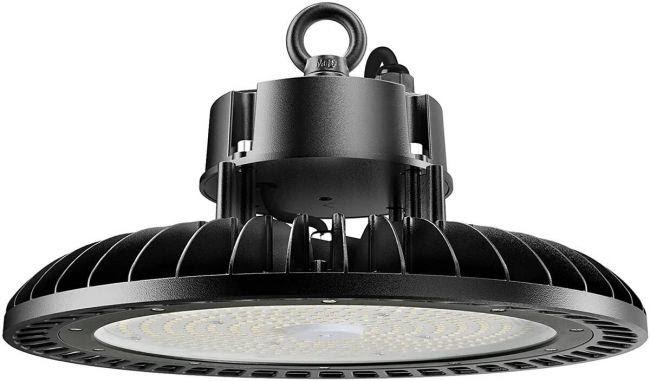Lepro brings to you the most advanced product design, with higher-quality LED technology that guarantees a longer lifespan of products. So, what are you waiting for? Place your order for high-bay lights with us now.
How to choose high-bay lights?
Over time, high bay LED lights have gained quite a lot of popularity. It has left behind all the other means of lighting and why not, these lights are supposed to brighten the space in an economical and eco-friendly manner. However, there is much more to high-bay lights than looking just at their economic benefits.

In this article, we are going to discuss every aspect of high bay lights. So, let us begin:
What are high-bay lights?
Whenever it comes to illuminating a large space, normal lights do not prove to be sufficient and that is where high bay lights come to the picture. Initially, the high bay lights were invented with the purpose of illuminating spaces that are higher than 20 ft.
Usually, you will see these lights at high ceiling spaces like the factories, gyms, high-towers, airports, and large department stores. These spaces need a massive amount of light, and high-bay lighting serves the purpose very well. So, if you are in search of a light system that can light up 20-40 feet of ceiling, go for it.
There are two ways to install these lights, either you can install them using supports like chain, hooks, and pendants or directly fit them into the ceiling. Lepro Lights offers both kinds of installement, depending on what you need, you can select one of their many high bay LED light option.
Some of the places where high bay lights are a must:
- Warehouse
- Manufacturing units
- Universities and Schools with high ceiling
- Gymnasiums
- Recreation centers
- Other Commercial spaces
How to choose a high-bay light?
240W high bay light or 100w high bay light? A lot of pf factors need to be considered when it becomes buying high-bay lights. You need to know about the accessories, size, shapes, looks and much more. So, let us see what it is that you should look for while buying high bay lights.
Lumens per watt
The first thing you need to consider is the lumen per watt for High Bay Light. Usually, there are many options for you to select from. For those who are not aware of the details, let us tell you that Watt is the standard unit for calculating the amount of energy consumed. Whereas, lumen is the amount of light produced by the lighting source.
Whatever light you buy, make sure that you are taking into consideration these two factors. Depending on the height of the building, you will require different measurements of lumens. For example, 10 to 15 feet of the ceiling will need a light source that produces approximately 10,000 to 15,000 lumens. For 15 to 25 feet you need 16,000 to 25,000 lumens, and from 30 to 35 feet you will need more than 35,000 lumens.
The type of High-Bay light
There are two kinds of Highway lights, one is the UFO, and another is linear. Their shape differentiates these two kinds of High bay lights. The UFO one is round in shape and the linear one is long in shape.

For a better source of light, go for the linear one, as the light distribution here is better. However, if you’re especially targeting larger areas with a ceiling height of more than 35 feet then the UFO High-bays LED light are the suitable one. These are also good for the area with wet conditions.

The color temperature
The Kelvin scale measures the color temperature of light. More the Kelvin scale is, warm, and yellow will be the light. If this number is lower, the output will be more of a cool color. Therefore, if you are trying to create an environment like home, then a Kelvin scale of around 3,000 k will be sufficient. However, if you are focusing on an industrial setup that requires a lot of light then go for something like 5000k.
Most of the light brands offer a free photometric layout, which will help you find out how many factory lights your facility will require and what should be the actual distance between them. According to Lepro Light, make sure you decide this in advance so that there is no unnecessary expenditure.
